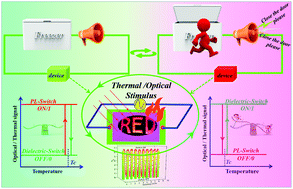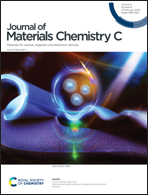Smart and efficient opto-electronic dual response material based on two-dimensional perovskite crystal/thin film†
Abstract
Smart stimulus-responsive materials, which can automatically respond to external stimuli (thermal/optical/electrical) and rapidly switch between high/low states (switch ON/OFF), have been an important feature in high-tech fields such as smart electronic devices, the Internet of things, robots and so on. However, the effective design and development of these materials with simple fabrication methods, multiple response modes and logical control features are still facing enormous challenges. Herein, the star family, organic–inorganic hybrid perovskites, embraces a new member, [C5H14N]2·[CdCl4] (1), which simultaneously displays rapid dielectric and fluorescence response under the stimulus of heat. Specifically, 1 exhibits a phase transition below room temperature (Tc = 239 K, and ΔT < 8 K) including a thermal anomaly, dielectric transition, and symmetry breaking. And the Mn-doped crystal could exhibit temperature-dependent red luminescence under UV excitation with a high signal-to-noise ratio of 3. Besides, the dielectric/fluorescent dual response triggered by heat exhibits a rapid response and high fatigue resistance. This finding will be a further step to the practical application of stimulus-responsive materials based on two-dimensional perovskites in smart electronic devices.



 Please wait while we load your content...
Please wait while we load your content...